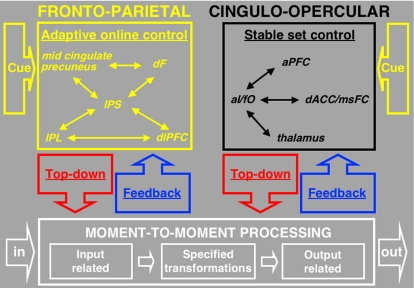Fig. 1.
Proposed dual networks for adult human task control. The dual-networks model of control in adults was motivated by results from cross-studies analyses of mixed blocked/event-related fMRI and rs-fcMRI data (2, 6). Both control networks are proposed to interpret cues, implement top-down control, and process bottom-up feedback, but use different mechanisms and over different temporal scales. The frontoparietal network (yellow) is proposed to act for rapid online control on a trial-by-trial basis (i.e., adaptive control) and the cinguloopercular (black) for more sustained task sets (i.e., stable control).

